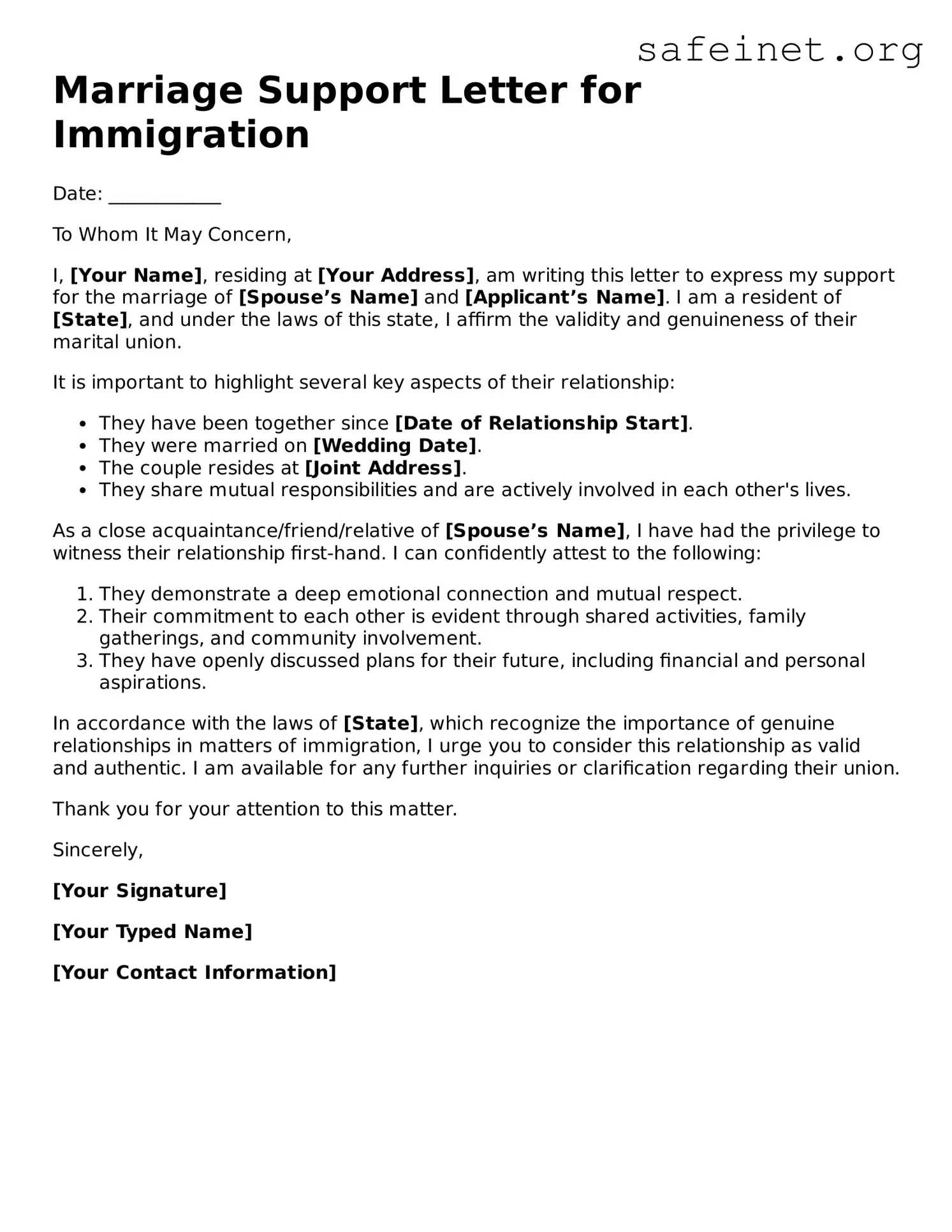The Affidavit of Support is a crucial document that establishes a sponsor’s ability to provide for a foreign spouse financially. Like the Marriage Support Letter, it includes personal information about the sponsor, including their income and employment details. This document is vital because it assures the U.S. government that the immigrant spouse will not rely on public assistance. Both documents emphasize the genuine nature of the relationship, highlighting the sponsor’s commitment to supporting their spouse, both emotionally and financially.
The I-130 Petition for Alien Relative serves a similar purpose in the immigration process. This form is submitted to demonstrate the legitimacy of the marriage and to initiate the green card process for the foreign spouse. Both the I-130 and Marriage Support Letter provide supporting evidence of the marital relationship, including photos, correspondence, and shared expenses. However, the I-130 focuses more on the legal aspects of the relationship, while the Marriage Support Letter presents a more personal narrative affirming the bond between the spouses.
The Proof of Relationship Evidence document package often accompanies the Marriage Support Letter. This package can include photographs, travel itineraries, and joint financial statements to illustrate the authenticity of the relationship. Both documents aim to validate that the marriage is genuine and not solely for immigration benefits. They work together to paint a fuller picture of the couple's shared life, reinforcing that the marriage is based on mutual affection and commitment.
The Form I-864, or the Affidavit of Support Under Section 213A of the Act, is another important document in this realm. It is similar to the Marriage Support Letter in that it ensures the immigrant spouse will not be a financial burden. Like the Marriage Support Letter, this form provides details about the sponsor's income, assets, and willingness to support their spouse. Both documents play a significant role in the immigration process, demonstrating the sponsor's financial stability and intent to support their partner.
The Relationship History Statement is a personal account that couples may prepare to further detail their journey together. This document often parallels the Marriage Support Letter, as both provide a narrative about the couple's relationship, including how they met, shared experiences, and plans for the future. While the Marriage Support Letter can serve as a formal declaration for immigration purposes, the Relationship History Statement offers a more intimate glimpse into the couple's experiences, enriching the context behind their marriage.
The Joint Asset Documentation, such as shared bank account statements or lease agreements, also serves as supportive evidence similar to the Marriage Support Letter. This type of documentation highlights the couple’s shared financial commitments, underpinning the legitimacy of their marriage. While the Marriage Support Letter speaks generally about the relationship, these joint documents provide concrete proof of intertwined lives, which strengthens the case for immigration officials evaluating the authenticity and stability of the marriage.
